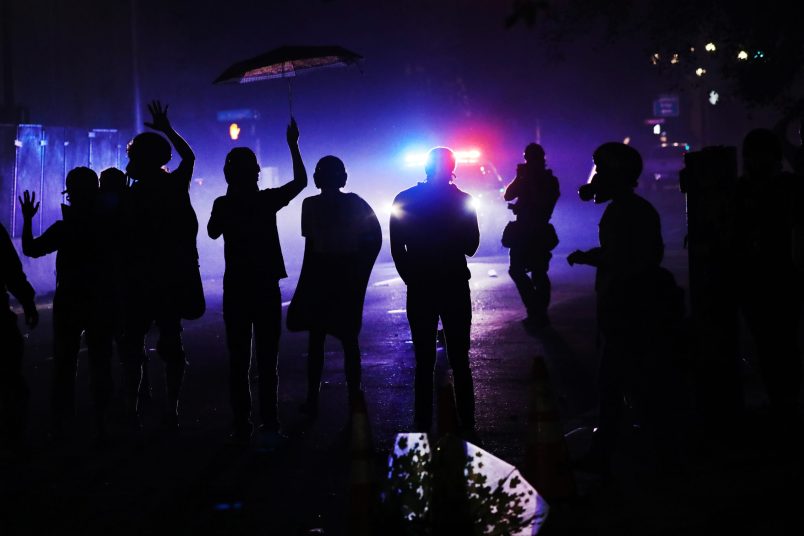This article is part of TPM Cafe, TPM’s home for opinion and news analysis. It first appeared at The Conversation.
The number of people killed by police officers in the U.S. has been massively underreported in official statistics over the past four decades, with an additional 17,000 deaths over that period, according to our new research.
Our study, which was published on Oct. 2, 2021, in The Lancet, compared statistics from the National Vital Statistics System, a federal database that looks at death certificates, with data from three nongovernmental organizations that more accurately track police violence: Mapping Police Violence, Fatal Encounters, and The Counted.
We found more than 30,000 deaths from police violence between 1980 and 2018. During that time, the National Vital Statistics System underreported fatal police violence by 55.5%.
The figures confirm that fatal police violence in the United States disproportionately affects Black, Indigenous and Hispanic people compared with white Americans. Black Americans were 3.5 times more likely to be killed by police than white Americans over the study period. Indigenous and Hispanic Americans were nearly twice as likely to be killed at the hands of law enforcement as white Americans.
Since 1980, the racial disparities in rates of fatal police violence have remained largely unchanged or worsened in some cases, according to our figures.
Why it matters
Police violence, like all violence, can be prevented.
The systemic racism that drives police violence is a threat to public health. We hope that our estimates of the underreporting of police violence will spur improvements to the accurate reporting of police violence in the death investigation system.
This study was one of the longest of its kind and covers all 50 states by race and ethnicity. As such, we also hope the comprehensive estimates as well as the existing nongovernmental data can be used for targeted, meaningful changes to policing and public safety that will prevent loss of life by highlighting areas of concern.
What still isn’t known
This paper does not calculate or address non-fatal injuries attributed to police violence, police officers killed by civilians, police violence in overseas U.S. territories like Puerto Rico, or residents who may have been harmed by military police in the United States or abroad.
Because this study relied on death certificates, which only allow for a binary designation of sex, we were unable to estimate fatal police violence against non-cisgender people, potentially masking the disproportionately high rates of violence against trans people, particularly Black trans people.
What’s next
Next, our research group is working on a publication on global fatal violence to increase the body of literature on violence as a public health issue.
We also will continue to review police violence estimates produced by the Global Burden of Disease study for all locations to improve reporting on this cause of death.
Finally, we will work to improve cause of death data quality to make the best information available for public health interventions.
Moshen Naghavi is a professor of Health Metric Science at the Institute for Health Metrics and Evaluation at the University of Washington.
Eve Wool is a research manager at the Institute for Health Metrics and Evaluation at the University of Washington.
Fablina Sharara is a researcher at the Institute for Health Metrics and Evaluation at the University of Washington.
This article is republished from The Conversation under a Creative Commons license. Read the original article.







No surprises here…
https://medium.com/vibe-control/omertà-snitches-and-the-blue-wall-of-silence-3bc8f66f7f34
Systemic police reform needs to happen. The police will not do it on their own, of course. Republicans are against it, and will lie and cheat to prevent change. What to do? Even if the police were shown to be ten times worse than they are, would that precipitate any change? Unlikely.
Like the (black? crimsom? pink? white?) walls of silence in the Catholic Church.
GOP: ”Unions are un-American!”
Also GOP: ”We LOVE police unions!”